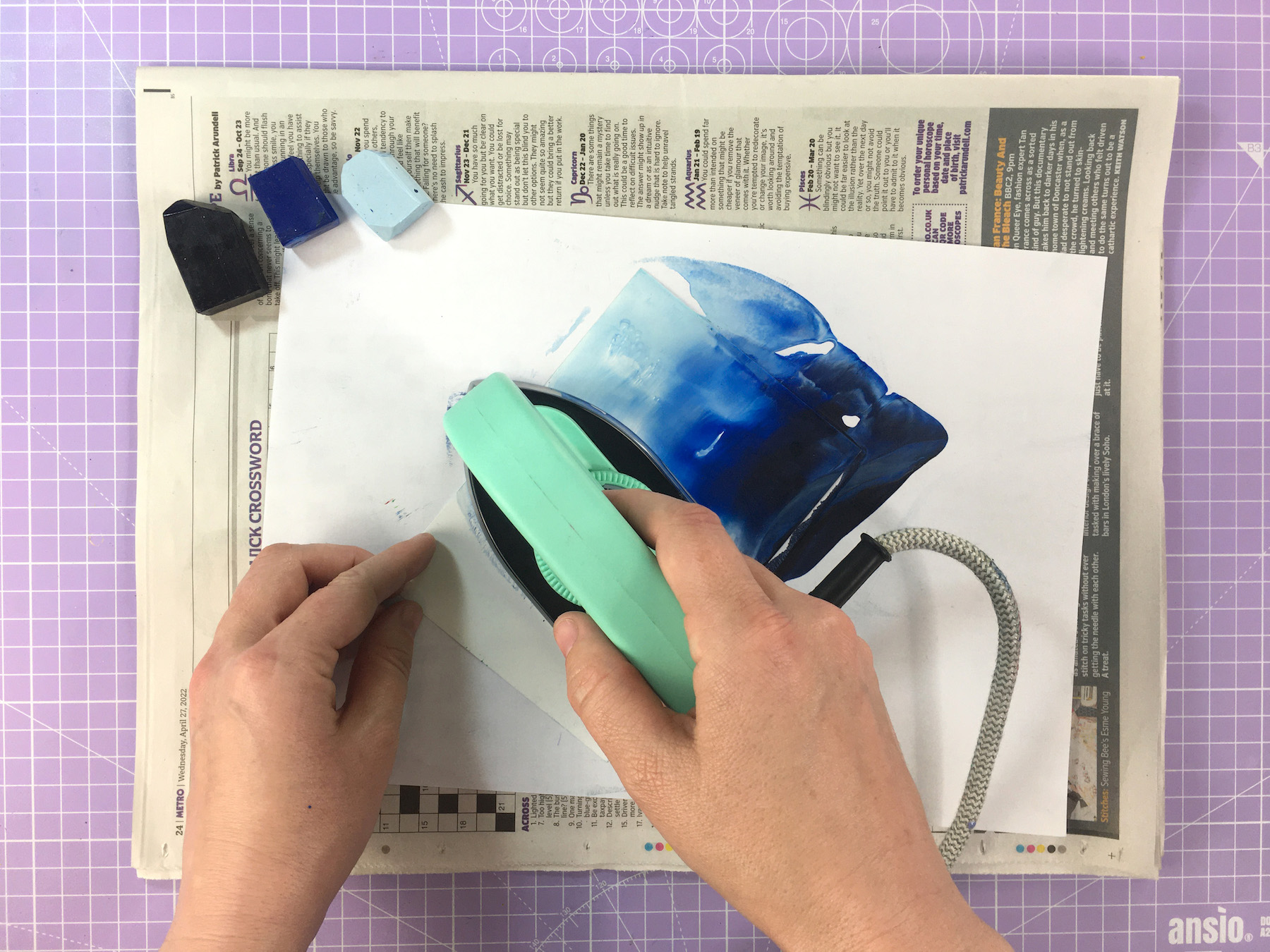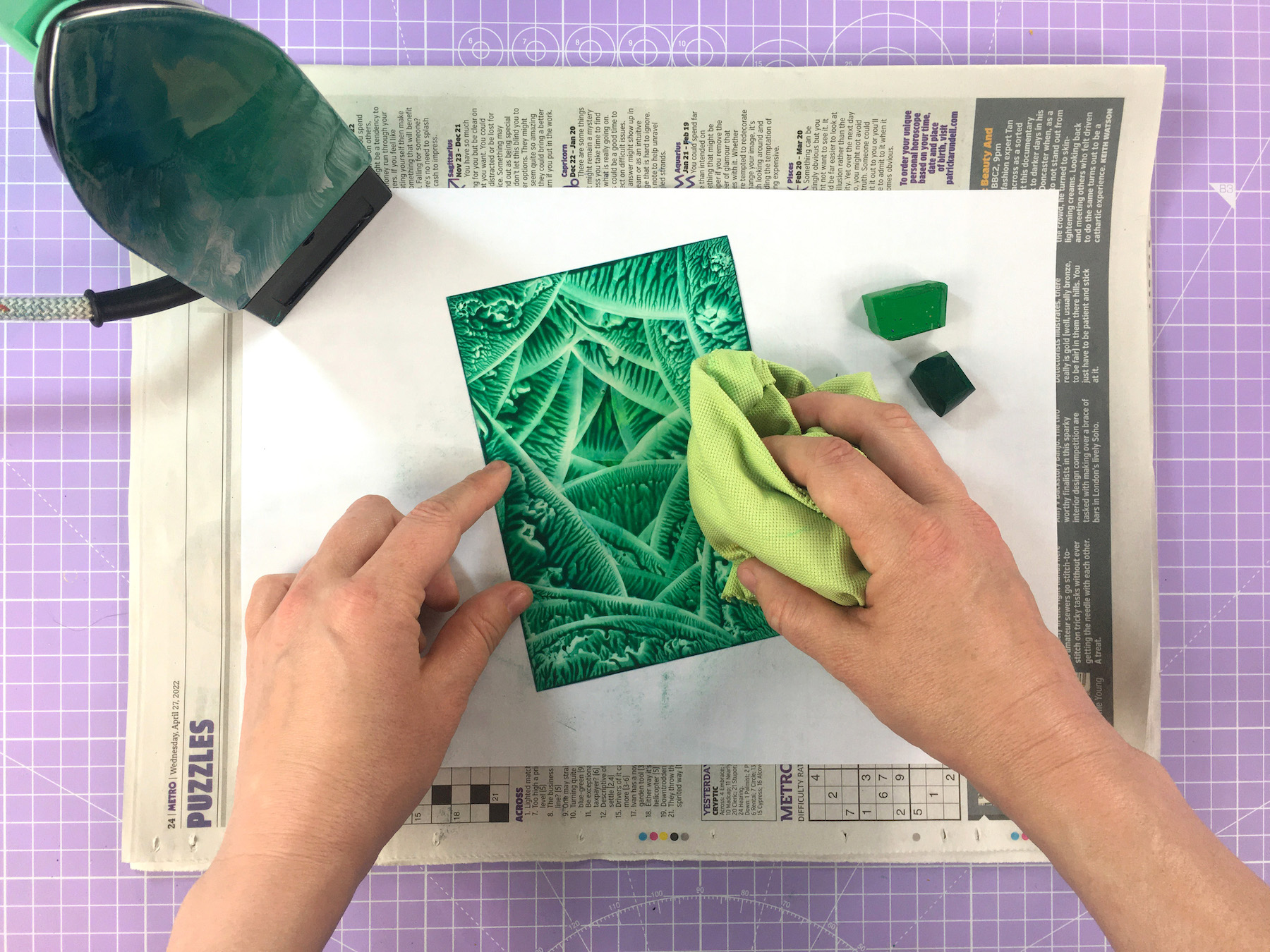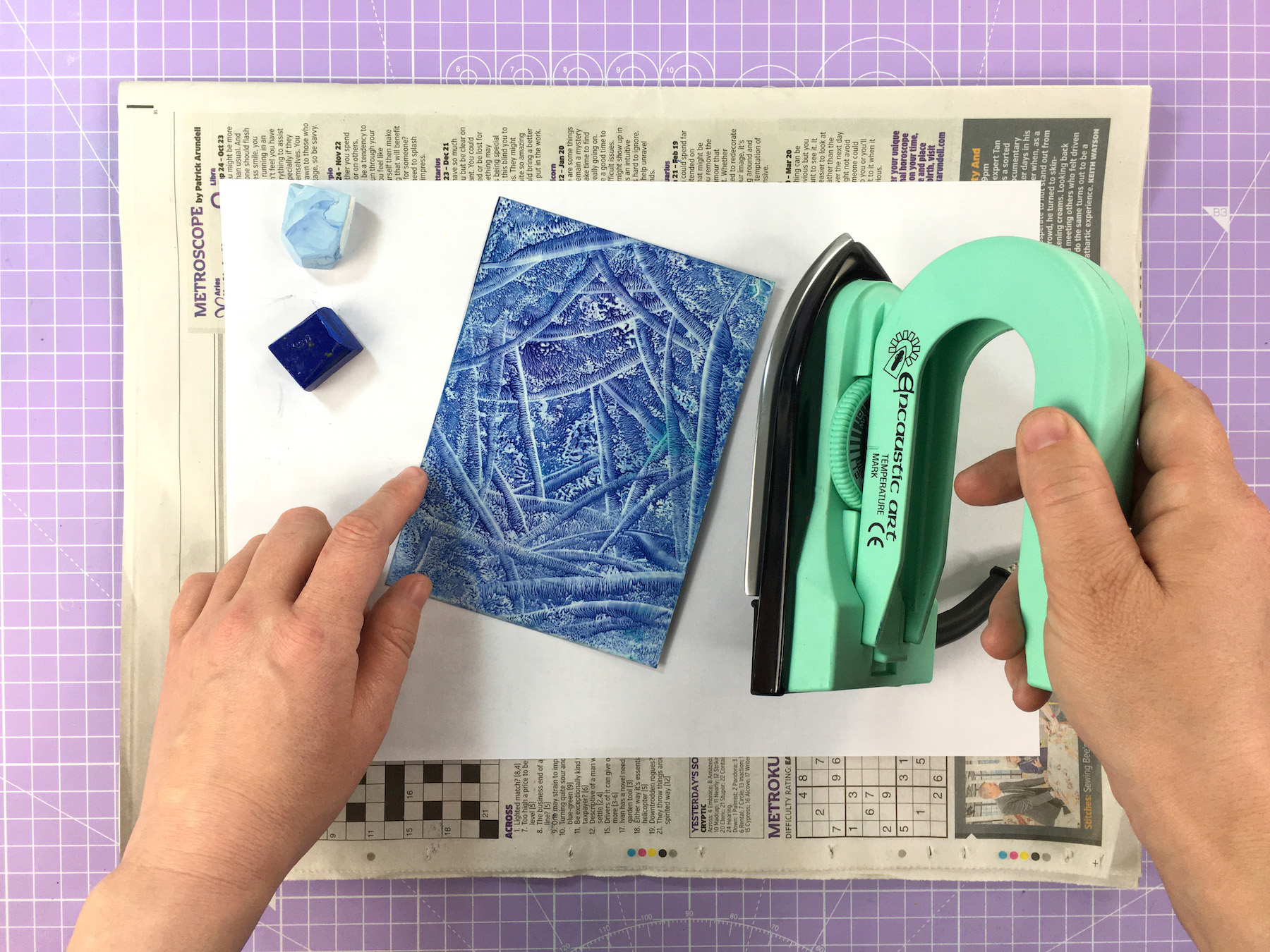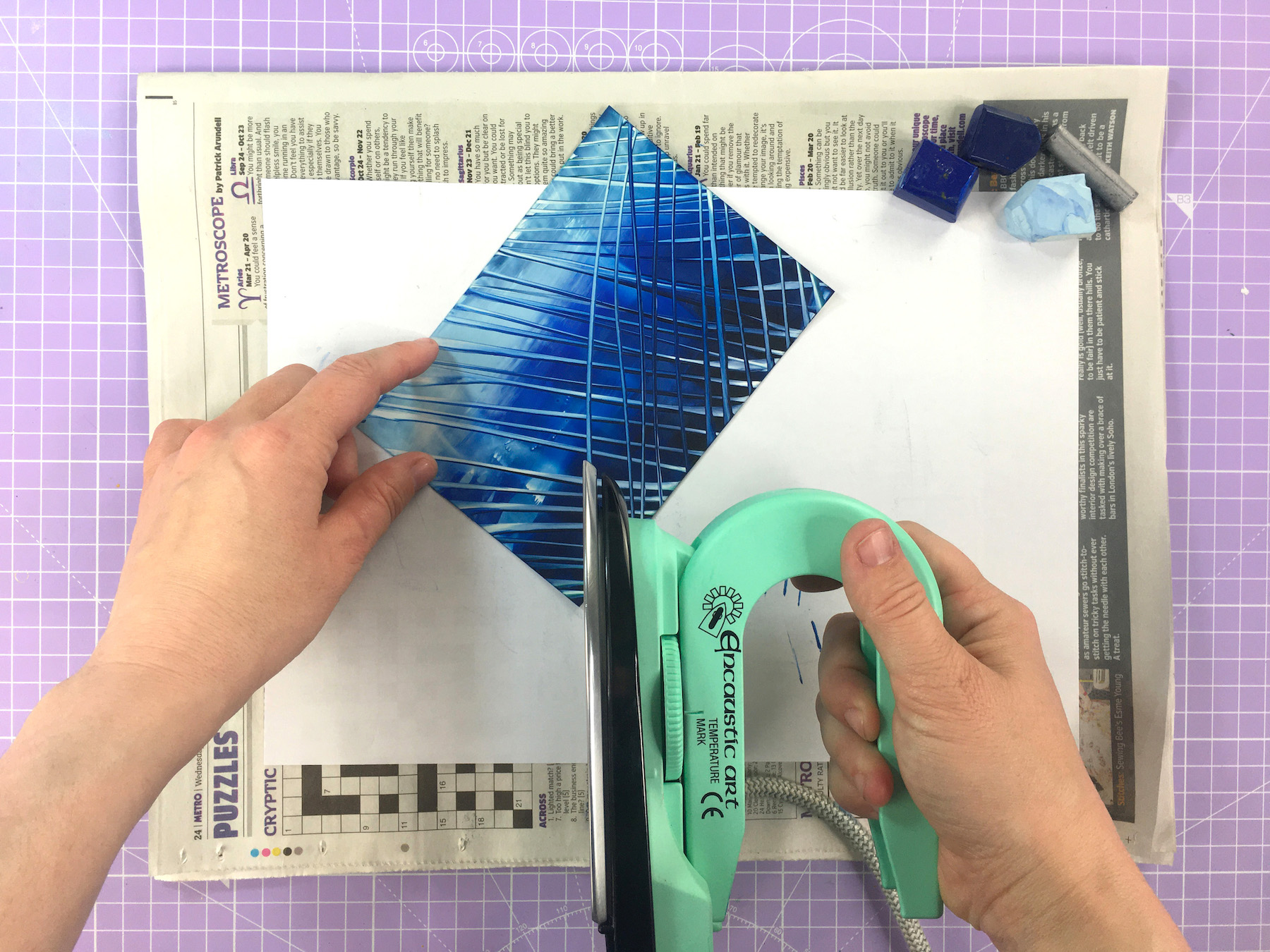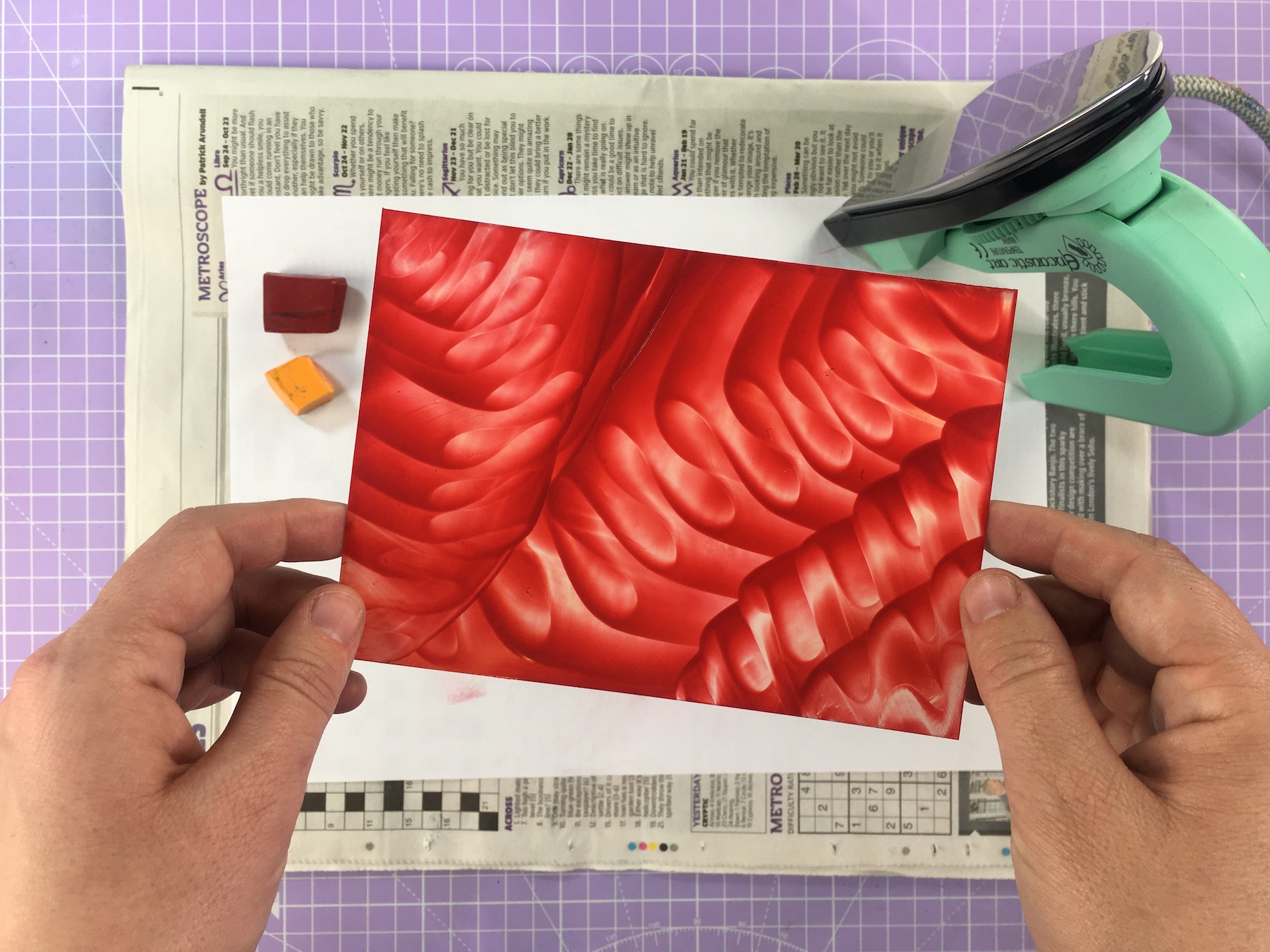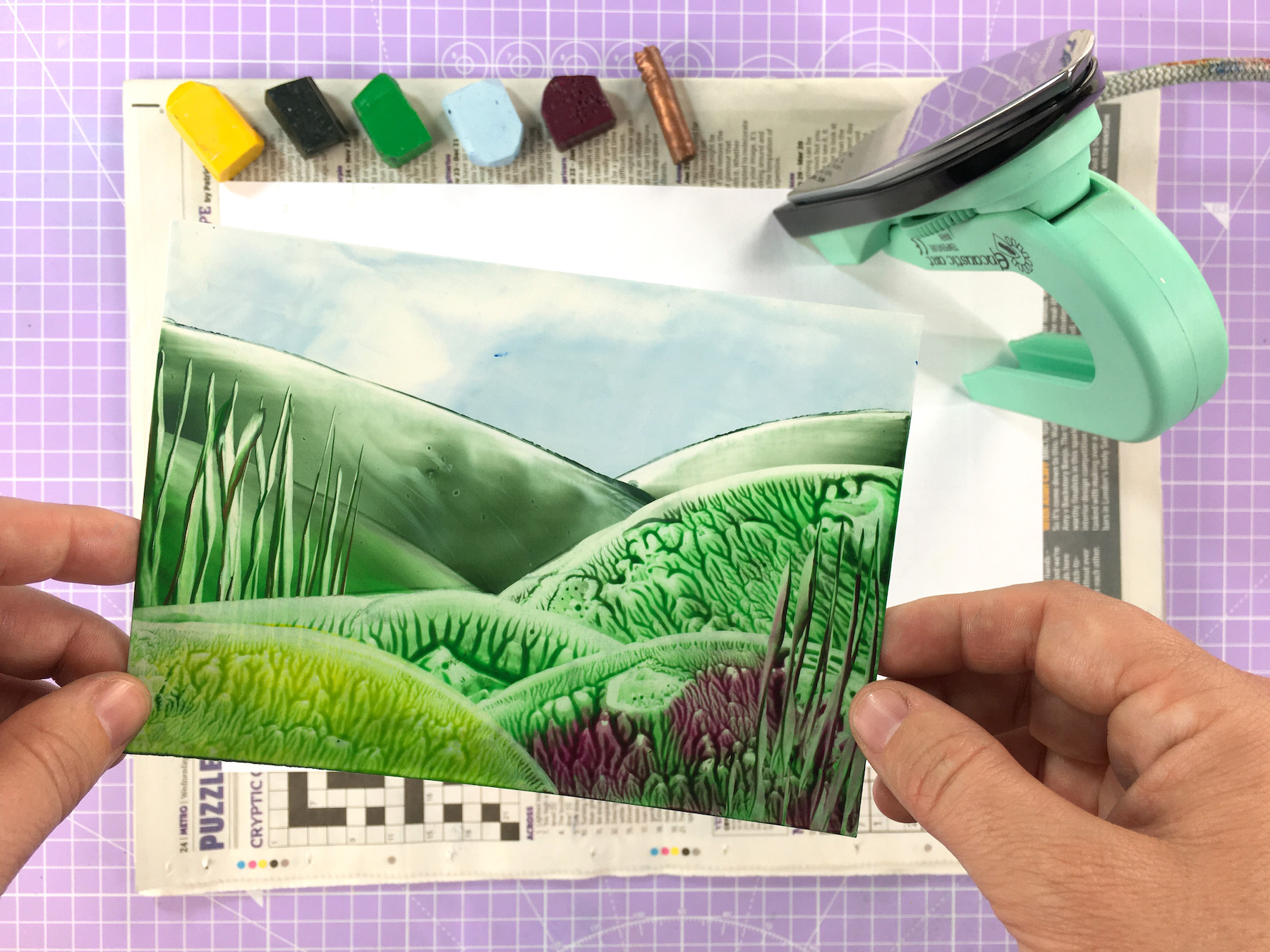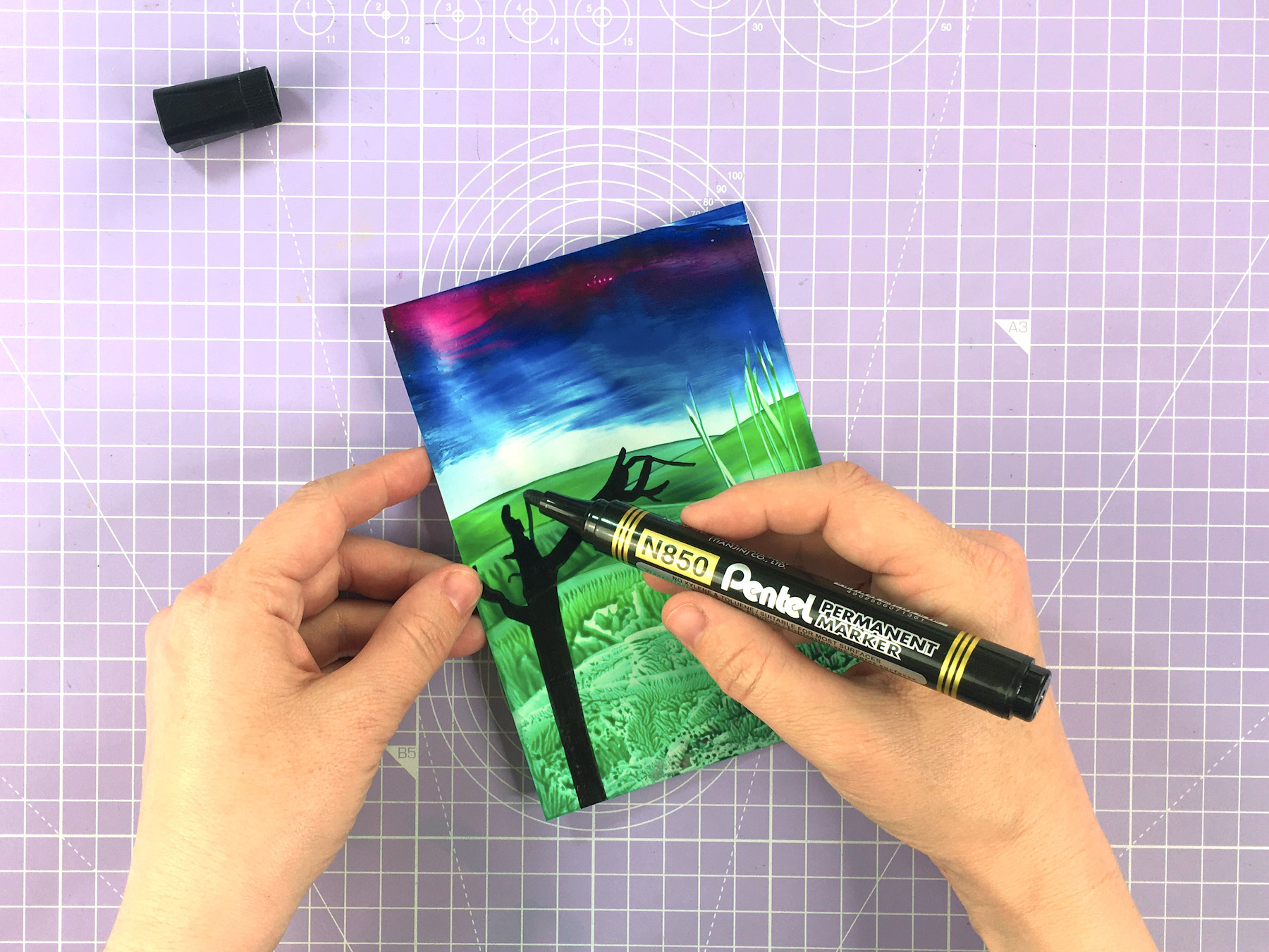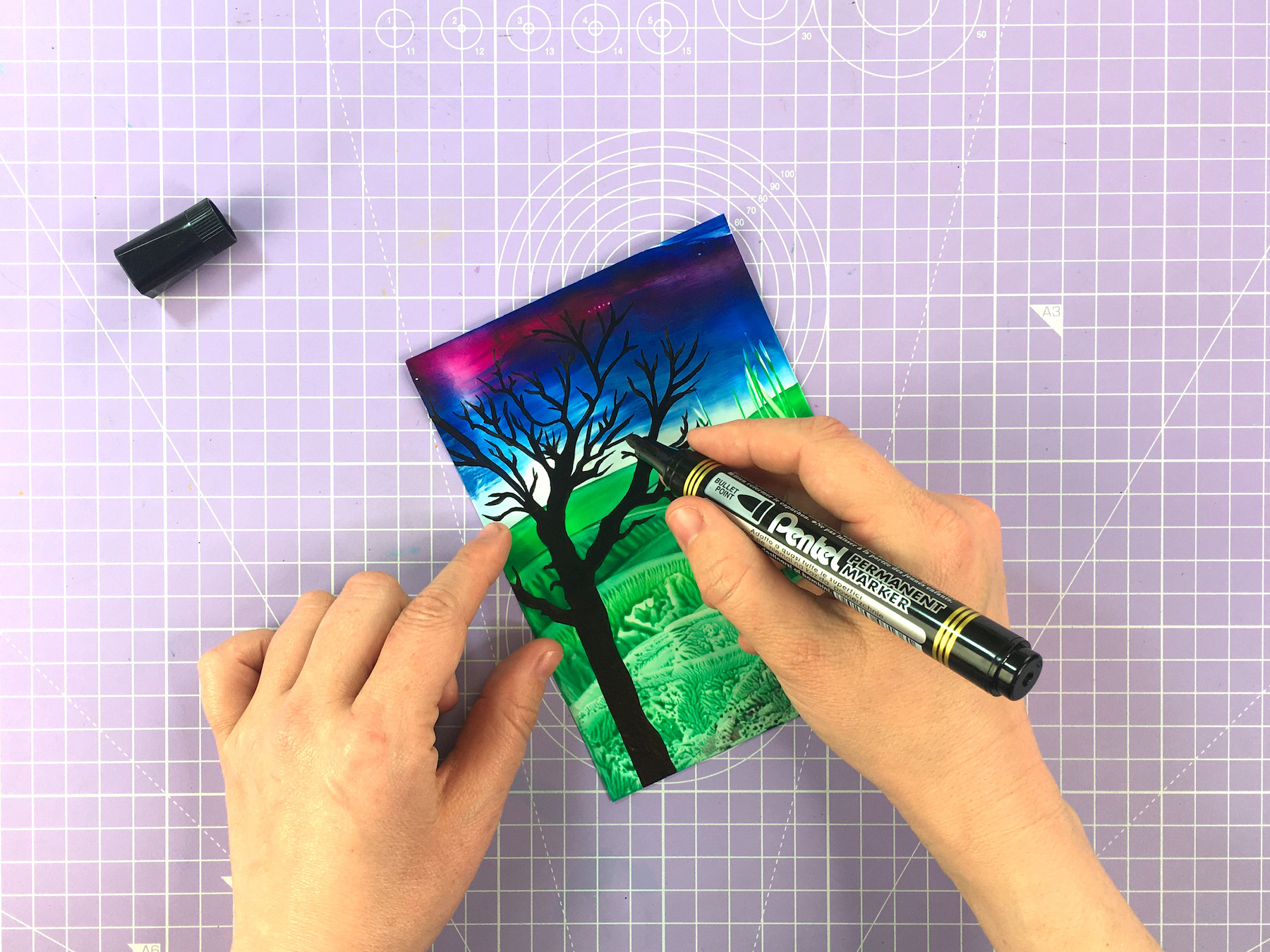Transform coloured wax into melted masterpieces using this easy guide to encaustic art. Each result is unique, and with just a little know-how, it’s easy to transform flowing wax into beautiful abstract images.
Have fun playing around with different colour combinations, and as each design only takes a few moments to set (as the wax solidifies), encaustic art is ideal for creating bespoke scrapbook pages, card toppers, or pieces of artwork in their own right.

If you like this beginner’s guide to encaustic art, why not check out some of our other beginner’s guides, right here on Gathered. In our beginner’s guide to sgraffito, we walk you through a collection of easy zentangle designs, or why not try your hand at paint pouring with our beginner’s guide to acrylic paint pouring? You could learn how to paint a watercolour galaxy or, if you love melted wax as much as we do, be sure to check out our beginner’s guide to batik art, this guide to making your own beeswax candles and how to make wax melts with essential oils.
We love seeing what you make, so don’t forget to share your craft projects with us on Instagram, Facebook, or Twitter, too!
What is encaustic art?
Encaustic art is a way of transferring melted wax onto a variety of surfaces, where it cools to create unique works of art. You’re essentially painting with wax, and because – by its very nature – wax melts, you can remelt it and change your artwork, simply by reapplying heat.

This, combined with the vibrance of the wax colours, inspires creative confidence and exploration. It’s also a very satisfying technique that produces great results, regardless of artistic ability.
The technique was developed by the ancient Greeks, more that 2,000 years ago. The word ‘encaustic’ derives from the Greek word ‘encaustikos’, which translates as ‘to heat’ or ‘burn in’. Encaustic paints don’t contain oils, so the colours won’t fade or deteriorate over time, and the wax will stay as fresh as the day you apply it.
Encaustic art creates beautiful unplanned artwork, but the basic effects can be controlled. All it takes is a little practise, and we show you how in this tutorial.
Buy an encaustic art starter set!
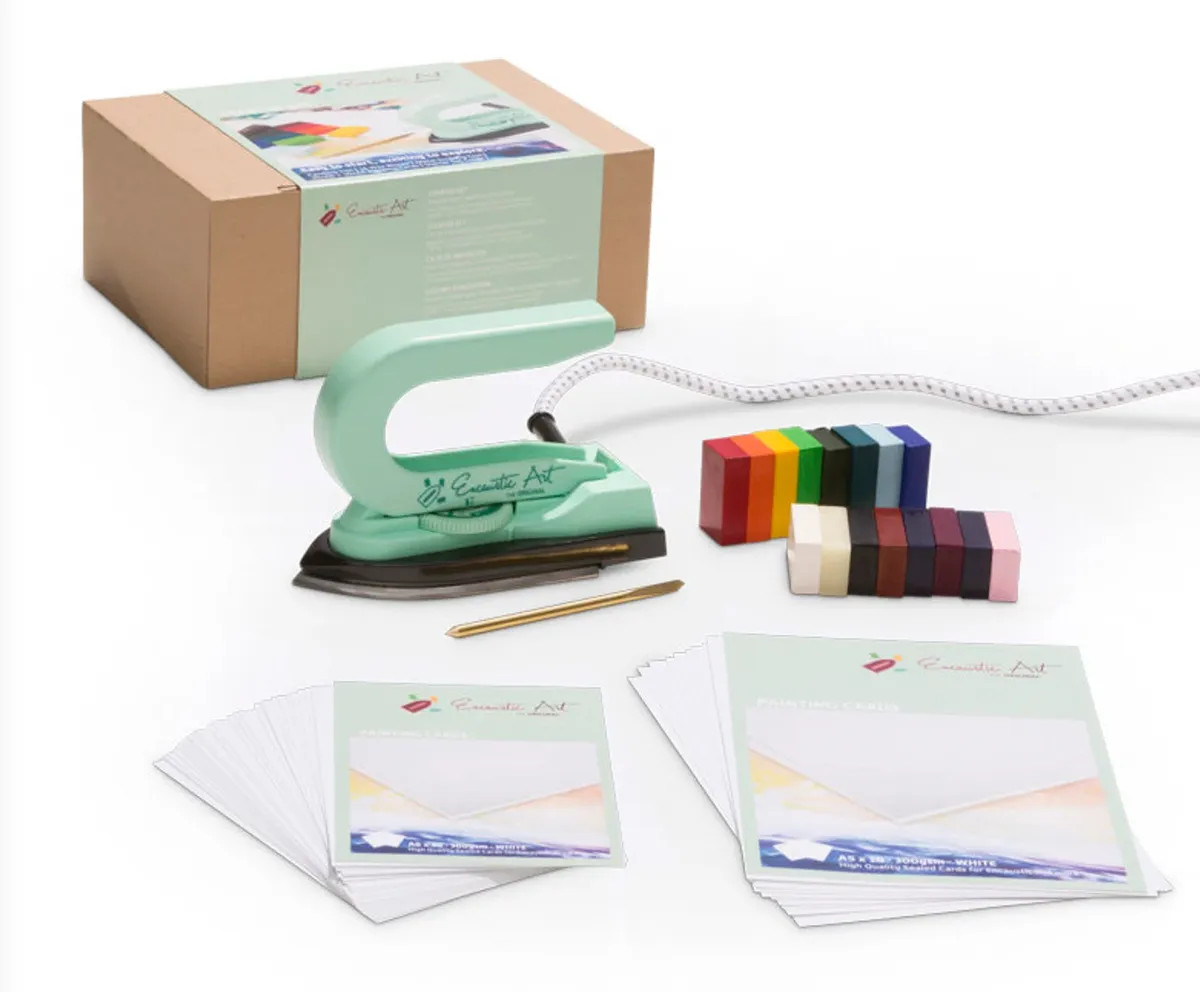
The main things you’ll need to get started are a craft iron, coloured wax blocks and some impermeable card. With the right tools, you’ll be pleasantly surprised at how quickly and easily you can master this craft, so an encaustic set like this one is a useful place to start.
This set includes 16 colours: crimson, orange, leaf green, blue-green, ultramarine blue, red-violet, rust-brown, black, white, olive green, pink, clear, pastel blue, mid yellow, cyan and purple. It also comes with 30 sheets of A6 painting card, 10 sheets of A5, and a metal scribing tool for scratching into the wax.
Top tips for creating encaustic art
- Play around with different surfaces like coloured sealed card, absorbent card, rough watercolour paper, tissue paper and even fabrics for interesting effects.
- Like acrylic paint, different colours of encaustic wax can be mixed to create new colours, and the standard colour wheel applies (i.e., red and yellow will mix to create orange etc).
- Use monochromatic tones to emphasise style and contrast, like an old-fashioned sepia photograph.
- Patterns can be created by simply making repeated or ordered marks. Use motions like dabbing, shuffling and wriggling with the iron to create a library of effects!
- Details can be added by using a stylus, or by using a permanent marker pen to draw over the top. This is particularly effective if you want to create sunsets!
- Clean your iron with tissue between each use as this keeps each layer of colours looking fresh.
- Switch out the newspaper and scrap paper underneath regularly, as wax build-up on the paper can transfer to the iron and from there, onto your work.

How to do encaustic art
We take you through the basic techniques needed in encaustic art: smoothing, shuffling, wriggling and dabbing, as well as guiding you through the steps needed to make your own simple landscape.
You will need
- Craft iron
- Coated card
- Coloured wax
- Microfibre cloth (for buffing the wax)
- Kitchen roll (for cleaning the iron)
Set up your work area
Protect your work surface with some newspaper. The padding will also help when smoothing the iron over your chosen surface. Place a piece of scrap paper on top of the newspaper, this will absorb the excess wax.
Change this scrap paper regularly, as the hot iron will pick up the wax again, and it may transfer to your work. Grab your iron, and some wax, and let's get started!



